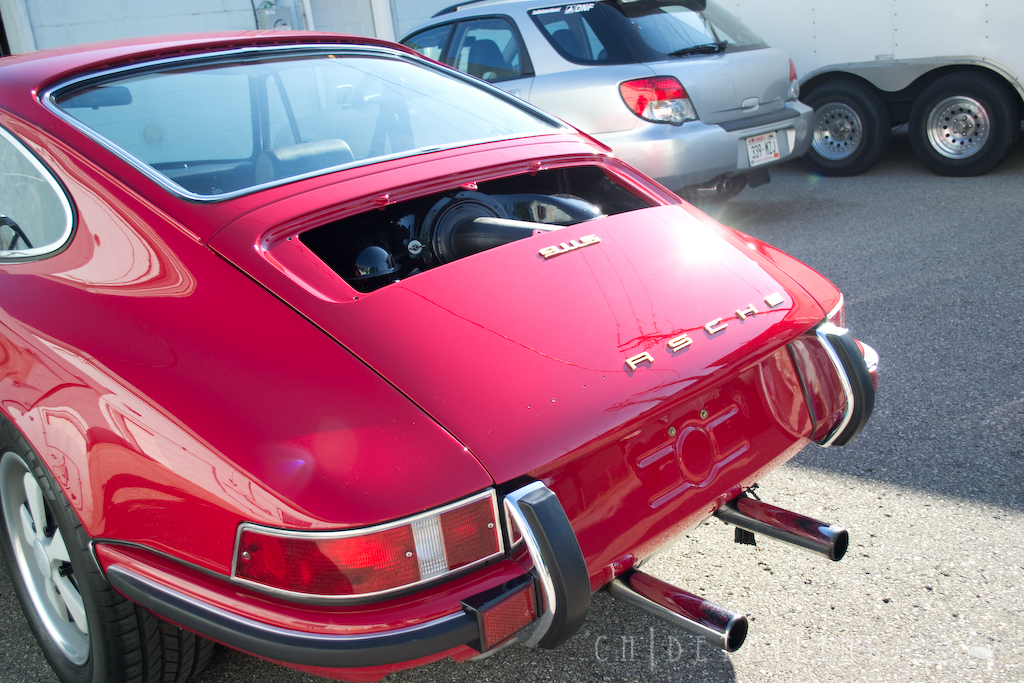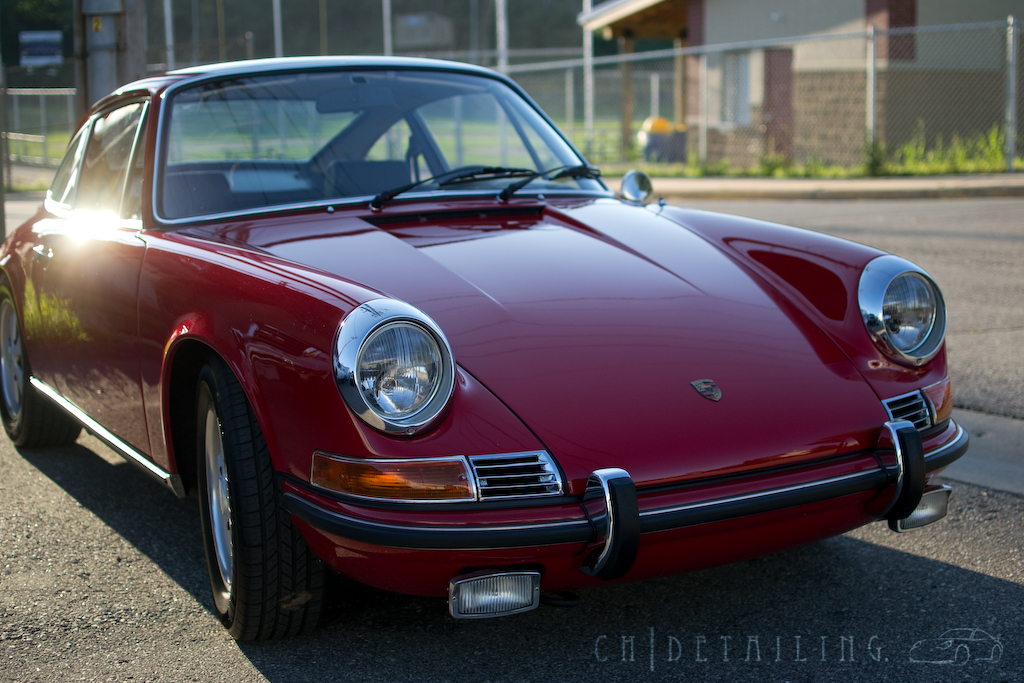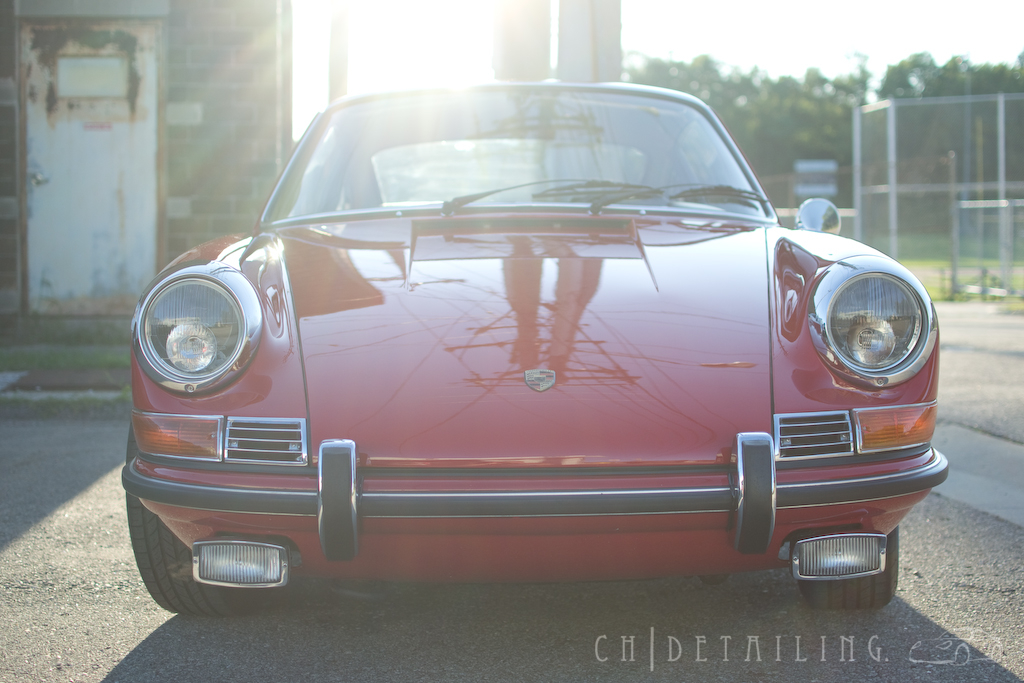The good news was that this car has never been polished since being repainted, the bad news was that it had seven years worth of dirt and debris rubbed across the finish.
Washed the car using Megs D111 with a bit of D103 added into the wash solution. When I rinsed the car the water did not bead up, but laid completely flat and wouldn't sheet off the car, and while drying with waffle weave towels (a few different brands) I noticed that the towel was very 'grabby' on the paint and didn't slide easily. I resorted to blotting the car dry, not for fear of creating some slight marring, but it was actually easier than wiping the car dry.
Once the car was dry I rolled it inside and began to thoroughly inspect the surface. Not surprisingly, the paint measured up as being very healthy, with the lower readings being around 10 mils, the high end in the area of 14. Being a restoration I will assume that there is a skim coat of body filler or a high build primer, so my working thickness was a bit less than what was being read on the gauge. Still, very healthy across the board with plenty of paint to work with.
Next up was the Brinkmann, to check the areas that were in shadow outside, and to make sure the paint looked equally bad under this light as under the sun. It's worth noting that red is normally tricky to photograph defects in, but these were very prevalent and not hard to demonstrate at all!
Yup, the paint looked just as jacked up once it was inside as it did when it was outside. I was having a tough time getting the right distances and angles to make the halogen useful, but it did show me these pigtails on the PS fender.
After inspection, it was time to clay using Blackfire Polyclay. After my experience with drying the car I was expecting there to be a good amount of contaminants pulled out of the paint, but surprisingly the clay came up with barely anything. This is from doing half the hood. I used M34 as lube and didn't have any issues with the clay being 'sticky'.
Once claying was complete, I did a couple of wipe downs with IPA to remove any residual clay lube or persisting wax. After claying and wiping with IPA none of my MFs were grabbing at the paint. Next up I did a test section on the hood, which has some pitting due to the aforementioned road rallies. I first tried SIP/orange, then M105/cyan, until settling on M105/PFW all on a flex rotary. Finished down with SIP and pO85rd.
This video was taken prior to stepping up to PFW. Even then there is a huge improvement made.
http://www.flickr.com/photos/c_harrison/6044674162/
After PFW.
Next up was disassembly and masking. I did a lot more masking than I normally would, in an attempt to keep the copious compound dust and sling out of the tight and hard to clean body gaps.
See what I mean about the dust?
Then it was just a repetition of the mind numbing and back aching process of compounding (2 or 3 passes), polishing, and 'jeweling'.











































































